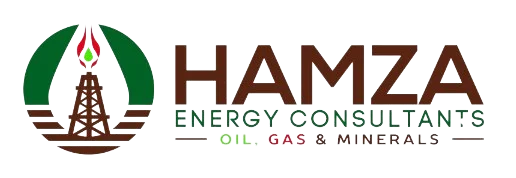Sara West Gas Field: Due Diligence of Risks, Reserves, Production Profiles, and Commercial Viability
Table of Contents
Executive Summary
-
- Introduction
-
- Purpose of the Report
- Scope of the Report
-
- Report Structure
- Purpose of the Report
-
- Geological Overview
-
- Location and Structure
- Fault Segmentation and Compartmentalization
- Reservoir Characteristics
-
- Gas Composition Analysis
- Location and Structure
-
- Reserves and Production Profiles
-
- Estimated Gas in Place Current
- Reserve Estimates
- Production Strategy and Forecast
-
- Discrepancies in Reserve Calculations
- Estimated Gas in Place Current
-
- Commercial Viability
-
- Market Adaptability and Challenges
- CO2 Management and Technological Solutions
- Economic Analysis of Gas Composition
-
- Strategic Sales and Marketing Approaches
- Market Adaptability and Challenges
-
- Risk Assessment
-
- Geological Risks
- Technical Risks
- Market Risks
-
- Environmental and Safety Risks
- Geological Risks
-
- Strategic Development Plan
-
- Drilling and Completion Plans
- Infrastructure Development
- Expected Production Rates
-
- Recovery Mechanisms
- Drilling and Completion Plans
-
- Hindrances in Project Implementation
-
- Regulatory Challenges
- Technological Constraints
-
- Financial Viability Adjustments
- Regulatory Challenges
-
- Forward Plan
-
- Short-term Operational Goals
- Long-term Development Goals
- Regular Monitoring and Updates
-
- Impact of Third-Party Reserves Certification
- Short-term Operational Goals
-
- Conclusion
-
- Summary of Findings
- Recommendations
-
- Future Research Directions
- Summary of Findings
Executive Summary – May 2024
Located strategically on the Mari-Kandkot High, Sara West covers a substantial area of approximately 50 sq-km. The geological setting includes a wrench-related fault segmentation that distinctly divides the field into two compartments: the Main (Northern drilled compartment) and the South (undrilled compartment). This segmentation has significant implications for exploration and development strategies due to the varying geological characteristics across the compartments. The volumetrics within these compartments have been rigorously assessed. In the Main compartment, the estimated gas-in-place (GIIP) in the Lower Goru ‘Intra-C’ Ss reservoir is substantial, recorded at 291bcf (P90) and 407bcf (P50). Conversely, the South compartment, which remains undrilled, holds promising reserves with an estimated GIIP of 71bcf (P90) and 96bcf (P50) at the ‘Intra-C’ level. Our Online Trusted Website gives you a detailed Overview of Sara West Gas Field.
Located strategically on the Mari-Kandkot High, Sara West covers a substantial area of approximately 50 sq-km. The geological setting includes a wrench-related fault segmentation that distinctly divides the field into two compartments: the Main (Northern drilled compartment) and the South (undrilled compartment). This segmentation has significant implications for exploration and development strategies due to the varying geological characteristics across the compartments.
The volumetrics within these compartments have been rigorously assessed. In the Main compartment, the estimated gas-in-place (GIIP) in the Lower Goru ‘Intra-C’ Ss reservoir is substantial, recorded at 291bcf (P90) and 407bcf (P50). Conversely, the South compartment, which remains undrilled, holds promising reserves with an estimated GIIP of 71bcf (P90) and 96bcf (P50) at the ‘Intra-C’ level.
The field’s gas composition presents unique challenges for commercialization; it is notably low in methane, containing about 90-140 btu/Scf, and features high concentrations of CO2 (approximately 60-70%) and N2 (20-25%), complicating processing and sales strategies. The presence of 10ppm H2S also adds to the operational considerations needed to safely manage the field’s output.
In terms of reservoir properties, the ‘Intra-C’ Sand exhibits medium porosity (12%) and permeability (100-250mD), while the ‘B’ Ss is characterized by higher permeability (200-1000mD). Both reservoirs are interconnected, as evidenced by Modular Formation Dynamic Tester (MDT) data, with a Gas-Water Contact (GWC) identified at 2565mSS.
Current reserve estimates by OGDCL are robust, with 773bcf (1P) and 1025bcf (2P) calculated, supporting long-term production strategies. The operational plan includes utilizing the existing three wells to effectively recover gas from the Main compartment. The projected plateau rates for gas production are 30 MMSCFD and 40 MMSCFD for the P90 and P50 scenarios respectively, over more than 15 years, accommodating both depletion and water drive recovery mechanisms, with respective recovery factors of 72% and 65%.
The initial estimates from PPL, which were more conservative compared to OGDCL’s current figures, highlight discrepancies primarily due to the depth structure maps employed. OGDCL’s approach, which utilizes maps drawn at the ‘Top-C’ level —shallower than the actual ‘Intra-C’ reservoir and omitting a sedimentary ‘wedge’ —has led to a 30-40% exaggeration in GIIP estimates. This difference underscores the importance of precise geological mapping and the potential financial and operational impacts of such discrepancies.
The commercial viability of Sara West remains challenging, primarily due to the high inert content which complicates the gas’s marketability and necessitates specific technological solutions for CO2 disposal. The trap structure, bounded on the east by a negative flower structure, and the deep fault cuts into the Jurassic-Triassic layers contribute to the high CO2 levels in the field. The assessed Geological Chance of Success for developing the South compartment stands at 60%, indicating significant exploration risks, particularly concerning the mapping accuracy and the lateral seal’s integrity by the fault.
In conclusion, while the Sara West Gas Field holds considerable potential, its development and commercialization entail carefully navigating geological, technical, and market challenges. Future development plans, especially those considering expansion into the South compartment, must rigorously confirm the GIIP through additional drilling and address the highlighted risks to ensure economic and operational feasibility.
